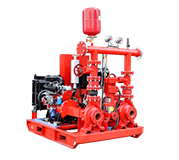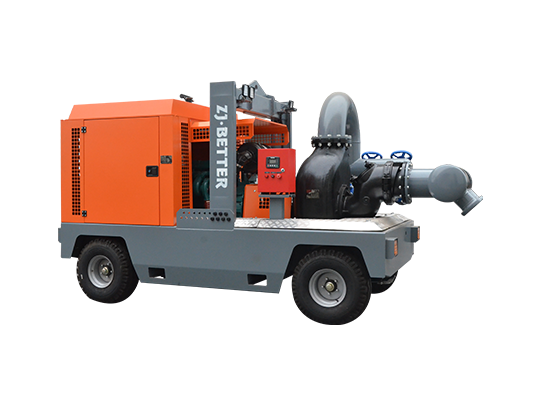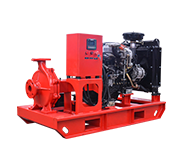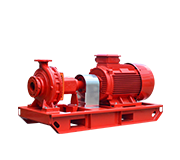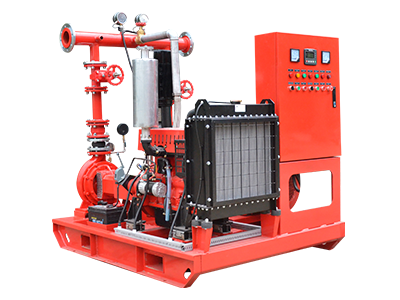- Fire Pump System
-
- UL-Listed Fire Pump SetEDJ End Suction Fire Pump SetEDJ Fire Pump SetEJ Small Flow Fire Pump SetFire Pump PackagesContainerized fire pump setDiesel Fire Pump SetED Small fire pump setElectric Jockey Fire Pump SetFire Pump Set with Jockey PumpFire Pump SystemSplit Case Fire Pump SetMutistage EDJ Fire Pump SetDiesel Fire Pump Set with Jockey PumpFire Fighting Pump SystemElectric Diesel Jockey Fire Pump SetFire Fighting Pump Set with Jockey PumpSmall Capacity Electric Fire Pump SetDJ Fire Pump Set with Jockey PumpEJ Fire Pump SetED Fire Pump Set (Electric+Diesel pump)Diesel Engine Fire Pump SetDiesel Fire Jockey PumpSmall Fire Pump SetEDJ Fire Pump SystemFire Water Pump SetFire Pump AssemblyDJ Small Flow Fire Pump SetCummins Engine Fire Pump Set
- Mobile Pump Unit
-
- Split Case Series Mobile Pump TruckSelf Priming Series Mobile Pump TruckCentrifugal diesel driven dewatering pumps open frame trailerFlow-mixing Mobile Pump TruckFlow-mixing Mobile Pump TruckManure Pump TruckP12 modle mobile Pump truckP10 Modle Mobile Pump Truck1000m³Self Priming Series Mobile Pump TruckLarge Flow Non-Clogging Mobile Fire Pump TrailerTrailer Mounted Fire PumpFire Emergency Mobile Pump TruckDiesel Engine Emergency Mobile Trailer Pump
- Diesel Fire Pump
-
- UL Listed Diesel End Suction Fire PumpXBC-S Diesel Split Case Fire PumpXBC-IS Diesel End Suction Fire PumpXBC-D Diesel Multistage Fire PumpVertical Turbine Diesel Engine Fire PumpDiesel Engine Single-Stage Centrifugal PumpXBC-IS Diesel End Suction Fire Fighting PumpXBC-S Diesel Engine Split Case Fire PumpDiesel Engine End Suction Fire PumpXBC-IS Diesel End Suction Fire PumpsZWC Diesel Engine Self Priming Pump for IrrigationDiesel Engine End Suction Fire Fighting PumpXBC-S Heat Exchange Diesel End Suction Fire PumpXBC-XA Diesel Engine End Suction Fire PumpXBC-IS Diesel Engine Fire PumpDiesel Engine End Suction Fire PumpXBC-IS Diesel Engine End Suction Fire PumpXBC-ISO Diesel Fire Fighting PumpPortable Fire PumpFire Booster Pump

Email: zjbetter@119pump.com
Tel:+86 15336708022(Gloria) +86 13306708055 (Ivy) +86 13357006058 (Serena) +86 13357022877 (Wendy) +86 17757009882(Kate)
Fax:0086-570-3010238
-
What are the considerations for using fire pumps in agricultural and farming operations?
In agricultural and farming operations, fire pumps are essential for protecting valuable assets, such as crops, livestock, and equipment, from the risk of fire. These environments often involve large open spaces, flammable materials, and limited access to municipal water supplies, making fire pumps a critical component of fire protection systems. Fire pumps provide the necessary water pressure and flow to sprinkler systems, standpipes, and other firefighting equipment, ensuring effective fire suppression. Jockey pumps help maintain consistent pressure in these systems, compensating for pressure drops and ensuring the system is always ready for immediate activation. In rural or remote farming operations, fire pumps may need to draw water from alternative sources, such as ponds, rivers, or r
View more +
-
How do fire pumps enhance fire safety in mixed-use developments?
Mixed-use developments, which combine residential, commercial, and sometimes industrial spaces, present unique fire safety challenges due to the variety of uses and occupants within a single complex. Fire pumps in these developments are essential for providing water to a wide array of fire protection systems, including sprinklers, standpipes, and hydrants, across different types of spaces. Jockey pumps maintain pressure in these systems, ensuring they are always ready to activate in case of a fire. The design of fire protection systems in mixed-use developments often involves zoning, allowing different areas to be protected according to their specific needs—residential areas might prioritize life safety, while commercial areas focus on property protection. Fire pumps must be capable of del
View more +
-
What are the considerations for using fire pumps in agricultural and farming operations?
In agricultural and farming operations, fire pumps are essential for protecting valuable assets, such as crops, livestock, and equipment, from the risk of fire. These environments often involve large open spaces, flammable materials, and limited access to municipal water supplies, making fire pumps a critical component of fire protection systems. Fire pumps provide the necessary water pressure and flow to sprinkler systems, standpipes, and other firefighting equipment, ensuring effective fire suppression. Jockey pumps help maintain consistent pressure in these systems, compensating for pressure drops and ensuring the system is always ready for immediate activation. In rural or remote farming operations, fire pumps may need to draw water from alternative sources, such as ponds, rivers, or r
View more +
-
What are the considerations for using fire pumps in government and military installations?
Government and military installations require robust fire protection systems due to their strategic importance and the potential presence of sensitive materials or high-value assets. Fire pumps in these facilities must provide reliable water supply and pressure to sprinkler systems, standpipes, and specialized fire suppression systems tailored to the specific needs of the installation. For example, military bases may have areas that require foam suppression systems for fuel storage or water mist systems for electronics and server rooms. Jockey pumps maintain consistent pressure in these systems, ensuring they are always ready to activate in an emergency. Given the critical nature of these facilities, fire pumps are often designed with multiple redundancies, including backup power supplies
View more +
-
What are the considerations for using fire pumps in agricultural and farming operations?
In agricultural and farming operations, fire pumps are essential for protecting valuable assets, such as crops, livestock, and equipment, from the risk of fire. These environments often involve large open spaces, flammable materials, and limited access to municipal water supplies, making fire pumps a critical component of fire protection systems. Fire pumps provide the necessary water pressure and flow to sprinkler systems, standpipes, and other firefighting equipment, ensuring effective fire suppression. Jockey pumps help maintain consistent pressure in these systems, compensating for pressure drops and ensuring the system is always ready for immediate activation. In rural or remote farming operations, fire pumps may need to draw water from alternative sources, such as ponds, rivers, or r
View more +
-
How do fire pumps and jockey pumps enhance the fire safety of high-occupancy residential buildings?
In high-occupancy residential buildings, such as apartment complexes and condominiums, fire pumps and jockey pumps are essential for maintaining effective fire protection systems that safeguard residents. These pumps provide the necessary water pressure and flow to sprinkler systems, standpipes, and other firefighting equipment, ensuring rapid fire suppression and preventing the spread of fire to adjacent units. Jockey pumps maintain consistent system pressure, ensuring that fire protection systems are always ready to activate in the event of a fire. Given the high density of occupants in these buildings, fire protection systems must be designed to minimize the risk of false alarms and ensure reliable operation. Fire pumps are typically integrated into the building’s broader fire safety pl
View more +
-
How do fire pumps handle fire protection in cold climates?
In cold climates, fire pumps must be designed and installed to prevent freezing and ensure reliable operation in low temperatures. This includes using heated enclosures or pump rooms to keep the pumps and associated piping above freezing temperatures. Insulation and heat tracing can be applied to pipes to prevent water from freezing, particularly for outdoor or exposed piping. Additionally, anti-freeze solutions may be used in sprinkler systems to protect against freezing. Fire pumps in cold climates must also be tested and maintained regularly to ensure that all components, including heaters and insulation, are functioning correctly. Special considerations are also given to the type of fire pump selected, with diesel-powered pumps often preferred over electric ones in areas where power ou
View more +
-
What are the key differences between diesel and electric fire pumps?
Diesel and electric fire pumps are the two primary types of fire pumps used in fire protection systems, each with its own advantages and considerations. Diesel fire pumps are powered by internal combustion engines and are typically used in locations where a reliable electric power supply is not available or where redundancy is needed to ensure continuous operation during a power outage. Diesel pumps are known for their reliability and ability to operate independently of the electric grid, but they require regular maintenance of the engine and fuel system, including fuel storage and periodic testing.
View more +
-
How do fire pumps handle the challenges of protecting large-scale outdoor events?
Protecting large-scale outdoor events, such as concerts, festivals, and sporting events, presents unique challenges for fire pumps. These events often require temporary fire protection systems that can be quickly deployed and adapted to the specific layout of the venue. Fire pumps must be capable of delivering water over large areas and maintaining pressure across extended hose lines or sprinkler systems. Portable or trailer-mounted fire pumps are commonly used in these situations, providing flexibility and mobility to meet the dynamic needs of outdoor events. In addition to the pump's capacity and mobility, ensuring adequate water supply and integrating with local fire services are critical to providing effective fire protection during these events.
View more +
-
What are the latest trends in fire pump technology for smart buildings?
In smart buildings, the latest trends in fire pump technology focus on integrating advanced sensors, IoT (Internet of Things) capabilities, and data analytics to enhance system performance and reliability. Smart fire pumps can communicate with building management systems (BMS) to provide real-time data on pump status, water flow, pressure, and other key parameters. This data can be used for predictive maintenance, alerting operators to potential issues before they become critical. Additionally, smart pumps can adjust their operation based on real-time conditions, optimizing energy use and ensuring the most efficient response during a fire emergency. These technologies enhance safety and align with the broader trend toward more intelligent, automated, and energy-efficient building systems.
View more +
-
What considerations are necessary for jockey pumps in cold climates?
In cold climates, jockey pumps must be designed and installed with specific considerations to prevent freezing and ensure reliable operation. This includes using heat tracing or insulation on piping and pump components exposed to low temperatures to prevent ice formation that could block water flow. Jockey pumps may also be housed in heated enclosures or indoor pump rooms to maintain a consistent temperature around the equipment. Additionally, the selection of antifreeze solutions or special materials resistant to cold temperatures can help protect the pump from damage. Regular monitoring and maintenance are also essential to ensure that the jockey pump remains operational and that the fire protection system is always ready to respond, even in harsh winter conditions.
View more +
-
What role do jockey pumps play in maintaining system pressure in systems with fire hydrants?
In fire protection systems that include fire hydrants, jockey pumps play a key role in maintaining the necessary system pressure to ensure hydrants are immediately ready for use. Fire hydrants are typically located throughout a property or a city to provide easy access to water for firefighting efforts. The jockey pump helps maintain a consistent pressure in the piping network that supplies these hydrants, ensuring they are always charged and ready to deliver water when a firefighter opens them. This is especially important in systems with extensive piping networks, where pressure fluctuations could occur due to minor leaks, thermal expansion, or water usage. By keeping the system pressurized, jockey pumps help ensure a rapid response during a fire emergency, providing critical support to
View more +
-
How do jockey pumps contribute to system integrity in variable temperature environments?
In environments where temperatures fluctuate significantly, jockey pumps play a key role in maintaining system integrity by compensating for pressure changes caused by thermal expansion or contraction of the piping system. These pumps are designed to activate when small pressure drops occur, keeping the system pressurized despite temperature variations. This helps prevent leaks and ensures that the fire protection system is always ready to respond, regardless of the environmental conditions.
View more +
-
What considerations are necessary when installing jockey pumps in seismic zones?
When installing jockey pumps in seismic zones, it's essential to consider the potential impact of an earthquake on the system. This includes ensuring that the pump and its components are securely anchored and equipped with seismic bracing to prevent damage during seismic events. Flexible connections and vibration isolation systems may also be necessary to accommodate movement without compromising the pump's operation. Additionally, the jockey pump's controls should be designed to maintain system pressure even if the primary fire pump is temporarily offline due to earthquake-related damage. Regular seismic inspections and maintenance are also critical to ensure ongoing system resilience in these regions.
View more +
-
What is the role of fire pumps in managing system redundancies?
In critical facilities, fire pumps often work within a system that includes built-in redundancies to ensure uninterrupted operation during an emergency. This could involve multiple pumps configured in parallel, where if one pump fails or requires maintenance, another can immediately take over. Redundant systems may also include separate power supplies and control systems to further enhance reliability, ensuring that the fire protection system remains operational under any circumstances.
View more +
-
How do fire pumps support fire protection in green buildings and sustainable architecture?
Fire pumps in green buildings and sustainable architecture are often designed to be energy-efficient and environmentally friendly. These pumps may be integrated with renewable energy sources, such as solar panels or wind turbines, to reduce their reliance on traditional power grids. Additionally, the use of advanced control systems allows for optimized water usage, which aligns with water conservation goals. By contributing to a building's sustainability efforts, fire pumps help achieve certifications like LEED (Leadership in Energy and Environmental Design) and enhance the overall environmental performance of the facility.
View more +
-
How do jockey pumps contribute to the energy efficiency of fire protection systems?
Jockey pumps contribute to the energy efficiency of fire protection systems by maintaining system pressure with minimal power consumption. Unlike main fire pumps, which are designed for high-flow, high-pressure scenarios, jockey pumps are smaller and use less energy, making them ideal for maintaining pressure during normal conditions without wasting power. Additionally, jockey pumps with variable speed drives (VSDs) further enhance efficiency by adjusting the pump’s speed to match the exact pressure requirements, reducing energy use and operational costs.
View more +
-
What are the specific requirements for installing fire pumps in hazardous locations?
Installing fire pumps in hazardous locations, such as areas with flammable gases or combustible dust, requires adherence to strict safety standards and regulations. These pumps must be explosion-proof, with electrical components that are sealed to prevent sparks and ignition sources. Additionally, the installation must include proper ventilation, grounding, and bonding to mitigate the risk of static electricity. The pump housing and piping should also be designed to withstand exposure to hazardous substances, ensuring the fire protection system can operate safely in potentially dangerous environments.
View more +
-
What are the benefits of using energy-efficient jockey pumps?
Energy-efficient jockey pumps offer several benefits, including reduced operational costs, lower energy consumption, and decreased environmental impact. These pumps are designed with advanced motor technologies and control systems that optimize performance while using less power. In addition to the direct cost savings, energy-efficient jockey pumps contribute to a facility's overall sustainability efforts, helping to meet green building certifications and regulatory requirements related to energy use.
View more +
-
How do jockey pumps handle pressure management in systems with multiple pressure zones?
In fire protection systems with multiple pressure zones, such as those found in large buildings or complex industrial facilities, jockey pumps are used to manage and balance the pressure between zones. Each zone may have different pressure requirements based on its location, height, or specific fire protection needs. Jockey pumps help to maintain the required pressure in each zone, preventing under- or over-pressurization, which could compromise the effectiveness of the fire protection system. Advanced control systems and pressure sensors are often employed to monitor and adjust the jockey pump's operation in real-time, ensuring optimal performance across all zones.
View more +
-
How does a fire pump handle high-rise building challenges like gravity and friction loss?
In high-rise buildings, gravity and friction loss can significantly reduce water pressure at higher floors. Fire pumps are designed to overcome these challenges by providing the necessary pressure boost to ensure that water reaches all levels of the building with adequate force to effectively suppress fires, regardless of the building's height.
View more +
-
What is the role of a fire pump in a wet pipe versus a dry pipe sprinkler system?
In a wet pipe sprinkler system, the fire pump ensures that water is immediately available in the piping to suppress a fire as soon as a sprinkler head activates. In a dry pipe system, which is used in areas where freezing temperatures are a concern, the fire pump must deliver water quickly once the system is activated, replacing the pressurized air in the pipes to fight the fire.
View more +
-
How do fire pumps protect underground facilities like tunnels and subways?
In underground facilities such as tunnels and subways, fire pumps are essential for providing the necessary water pressure to fight fires in areas that are difficult to access. These pumps must be capable of delivering high-pressure water over long distances and in confined spaces, ensuring that fire suppression systems are effective even deep underground.
View more +
-
What are the considerations for fire pumps in petrochemical facilities?
In petrochemical facilities, fire pumps must meet the rigorous demands of handling flammable liquids and gases. The pumps need to be explosion-proof and capable of delivering large volumes of water or foam to control fires in highly hazardous environments. Additionally, the installation must comply with strict industry standards and safety regulations, ensuring that the fire protection system can operate effectively in the event of a fire or chemical spill.
View more +
-
What are the implications of using fire pumps in systems with fluctuating demand?
In fire protection systems with fluctuating demand, such as those serving mixed-use developments, fire pumps must be capable of adjusting their output to match the varying needs. This might involve using variable frequency drives (VFDs) that allow the pump to operate at different speeds depending on the current demand, ensuring efficient operation while maintaining the necessary pressure. Properly managing these fluctuations is critical to prevent both under-pressurization during high demand and energy waste during low demand.
View more +

